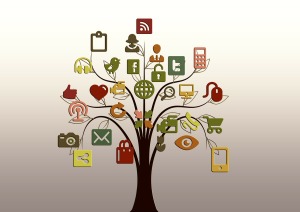 Where is the ubiquitous Learning Management System (LMS) heading if 21st century learning is founded in flexibility, communication and authentic experiences? New thinking is describing a mash-up interface for learners based on the principles of Universal Design for Learning (UDI) – but what does that even mean?
Where is the ubiquitous Learning Management System (LMS) heading if 21st century learning is founded in flexibility, communication and authentic experiences? New thinking is describing a mash-up interface for learners based on the principles of Universal Design for Learning (UDI) – but what does that even mean?
At our institution we use Moodle. It has been configured to suit our needs. It works for us: the institution. But does it work for the learner? Does it work for the tutor?
How does a LMS like Moodle deal with the plethora of applications and resources now available? How does it accommodate the situation and learning styles of a diverse group of learners, and the differing approaches of tutors? The reality is that it cannot. And that is okay.
In vocational training learners are expected to marry practical skills and knowledge acquisition. They are expected to develop skills such as working in groups, communication and work safety. The tutor puts information and rich media into Moodle and flips the classroom – and that is great. But they also ask students to engage in online discussions, work collaboratively on projects, produce digital portfolios, and bring new thinking to class. Much of this happens outside Moodle.
It is estimated that 99% of higher education institutions run an LMS[1]. However, less than half use the LMS to promote interaction outside of the classroom. The truth is – it is hard to do. An LMS is simply not as good at engagement, or collaborative project work, or sharing content, as the applications that are purpose-built for these tasks.
The LMS has a place in an institution’s portfolio of teaching and learning software. It can be a great home base. It can provide good feedback – both ways. It is often ideal for institutional purposes of control and measure. But there is so much more we can bring to bear.
The next generation of learning environment will be a confederate of components. By using a cloud platform and agreed standards for interoperability it is possible to think in terms of a personalised learning space, offering a range of applications and services.
This model is a match with the central premise of Universal Design for Learning (UDL): flexibility. UDI advocates for providing choice in how learners receive information, how they express what they know and how they engage.
While UDL has a learning and teaching focus, it would benefit from the application of a mash-up learner interface – one which draws content and services from a range of sources and provides them through a single interface. This is technology working to support pedagogy.
The next generation of learning management system is not a thing like the LMS – it is a concept. It is the application of a suite of compatible cloud applications and a mash-up interface, working in support of UDL.
[1] http://www.educause.edu/library/resources/learning-management-system-evolution
